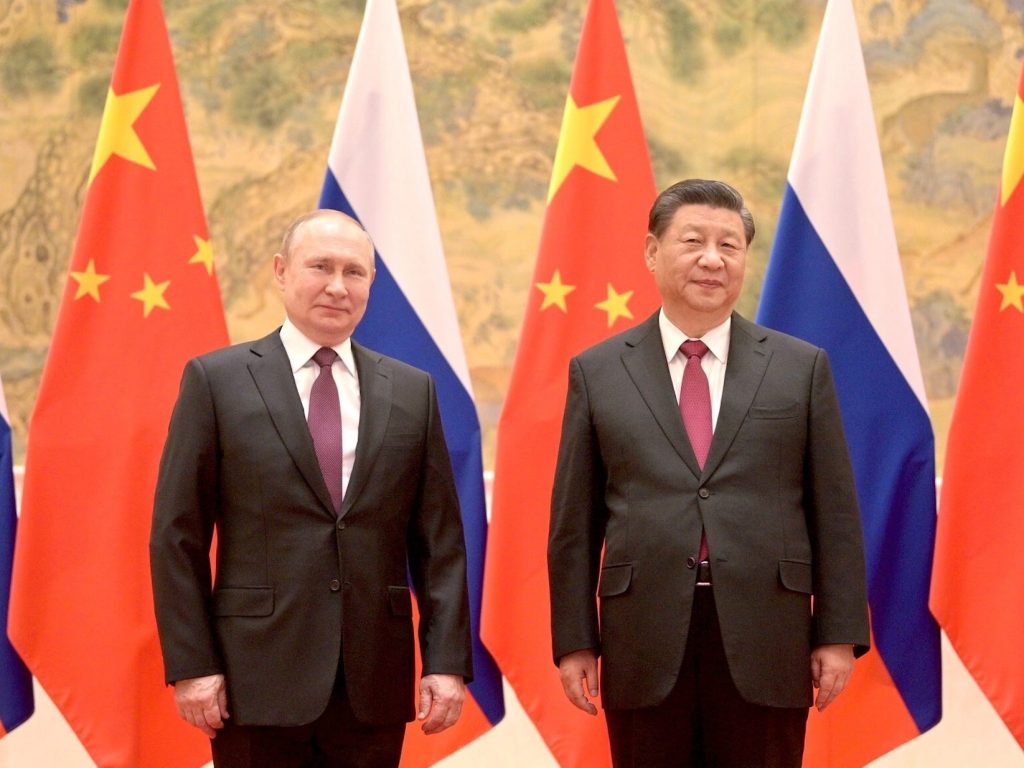- Some Russian banks have been banned from SWIFT, a cross-border messaging service for banks.
- India was reportedly considering a Russian proposal to use the SPFS for payments in rubles.
- Moscow is also working with Beijing to connect to the Chinese messaging system.
In the aftermath of Russia's unprovoked invasion of Ukraine, some Russian bans were banned from SWIFT, the Belgium-based messaging service that lets banks around the world communicate about cross-border transactions. The ban has hampered cross-border transactions for Russia's trade and financial systems, isolating the country economically.
Now, both Russia and China are looking to establish alternatives to the US dollar hegemony.
Russia is touting an alternative ruble-based payment system called the System for Transfer of Financial Messages (SPFS). The system was set up in 2014. In late April, the country's central bank said it would start keeping the names of participants secret.
China's Cross-Border Interbank Payment System (CIPS) — which processes payments in Chinese yuan — also has potential to replace SWIFT. The system has an expansive network of 1,280 financial institutions, said Peter Keenan, the cofounder and CEO of Apexx, a payments provider that used to work with Russia's domestic Mir payment card. That's compared to SPFS' much smaller network of 400 users.
There are few alternatives to SWIFT, Keenan told Insider: "This is one of the reasons why Russia is looking to CIPS and an alternative for Asian payments specifically."
Here's how China and Russia's SWIFT alternatives could cause disruptions in the global payments system and the dollar's dominance.
How do China's and Russia's alternatives to SWIFT work?
China's central bank launched CIPS in 2015 with the aim of internationalizing the use of the yuan. CIPS still relies largely on SWIFT for cross-border messaging, but it has the potential to operate on its own messaging system, said PS Srinivas, a visiting research professor at the National University of Singapore's East Asian Institute.
Russia's SPFS, on the other hand, has been limited to domestic use. New members are not likely to join now, as the move could be construed by the US and its allies as trying to help Russia evade sanctions, Srinivas wrote in a March report. But Moscow is working with Beijing to connect it with CIPS to work around the SWIFT ban, Reuters reported.
"To get rid of risks associated with maintaining trade turnover, establishing cooperation between the Russian and Chinese financial messaging systems is needed," said Anatoly Aksakov, the head of the financial committee in Russia's lower house of parliament, per Reuters.
What do the alternatives to SWIFT mean for the US dollar?
The US dollar is the dominant currency used in 88% of the world's trade, according to Bank for International Settlements.
But if CIPS were used to settle more trade, it would create a Chinese-yuan driven alternative to the dollar-dominated SWIFT system. China does have ambitions to make the yuan the most dominant reserve currency in the world, but it has a long way to go, mainly because Beijing still manages its value tightly. It also isn't fully convertible to other currencies on the global market right now.
Russia's demand of energy payments in rubles is significant because the country is an energy powerhouse — so the rise of an alternative currency for the industry could cause knock-on impact on a world trading system dominated by the dollar. However, experts say Russians won't allow themselves to become so dependent on USD, and instead expect a pivot to China.
"The role of CIPS for bilateral trade settlements between Russia and China for yuan transactions will likely grow over the medium term," said Rajiv Biswas, the Asia Pacific economist for S&P Global Market Intelligence.
The Indian government was considering a Russian proposal to use the SPFS for payments in rubles, Bloomberg reported in March. It's also mulling using the Chinese yuan as the currency to reference the rupee-rubles trade, India's Mint media outlet reported last month. Meanwhile, oil giant Saudi Arabia was also in discussion to be paid in yuan instead of dollars for its oil sales to China, according to a Wall Street Journal report from March.
Still, many factors constrain wider use of CIPS, as the yuan accounts for just 3% of global trade while the greenback and euro still account for 77% of total global payments, Biswas told Insider.
What would a shift from the dollar mean for the US economy?
The US dollar is the world's reserve currency used widely as a default base of foreign exchange. This status allows the US to borrow money overseas more easily and at a lower cost.
If the dollar loses its dominance, it will hit the US economy.
"It would likely hurt the value of the dollar and create inflationary pressure on the prices of consumer goods," Allianz Global Investors explained in a 2018 report. "Ultimately, the United States' loss of reserve-currency status may only limit any further decline in wages, and there is a good chance it would also make US consumers a lot poorer."
As it is, US inflation rose 8.5% year-over-year in March, according to the Bureau of Labor Statistics — the most rapid one-year price surge in about 40 years.
If the dollar weakens, imported goods will get more expensive. It will also get more expensive for Americans to travel to places where the dollar has weakened against the local currency.
